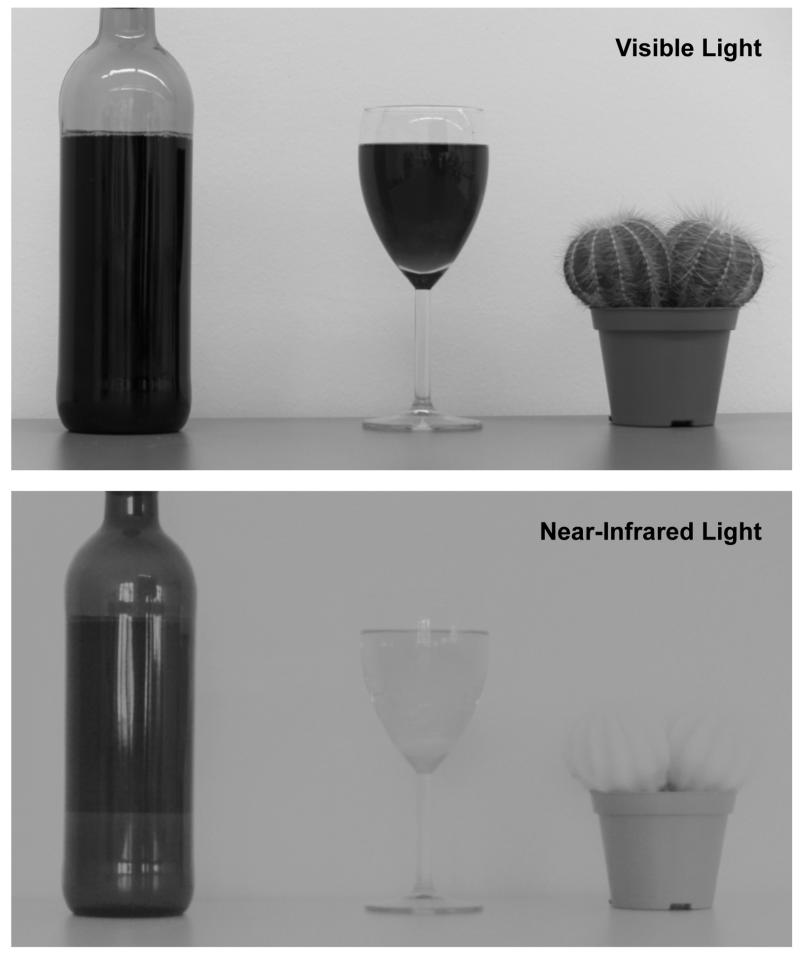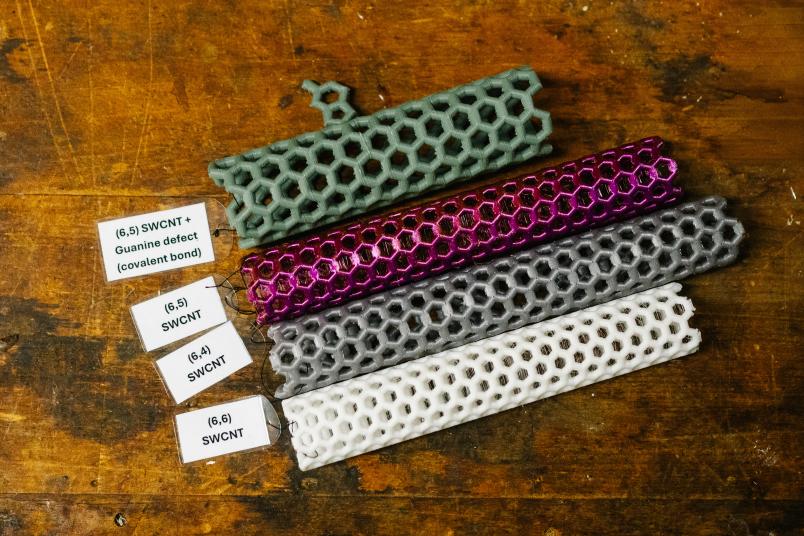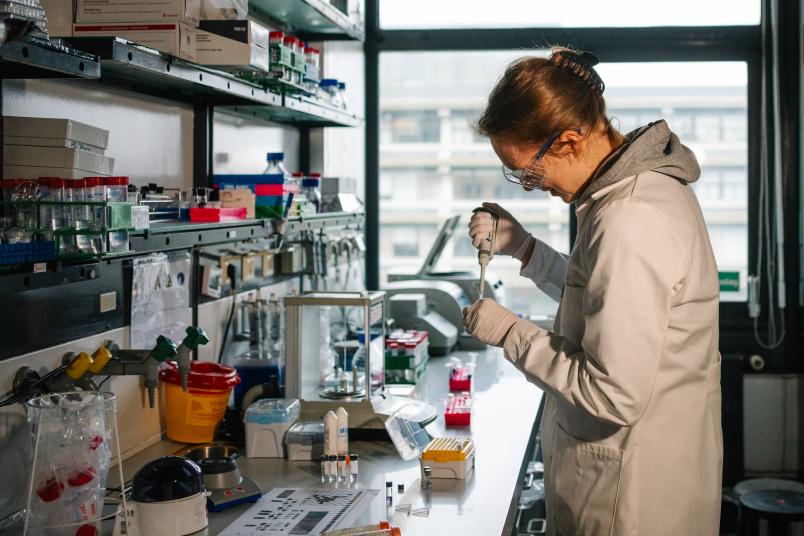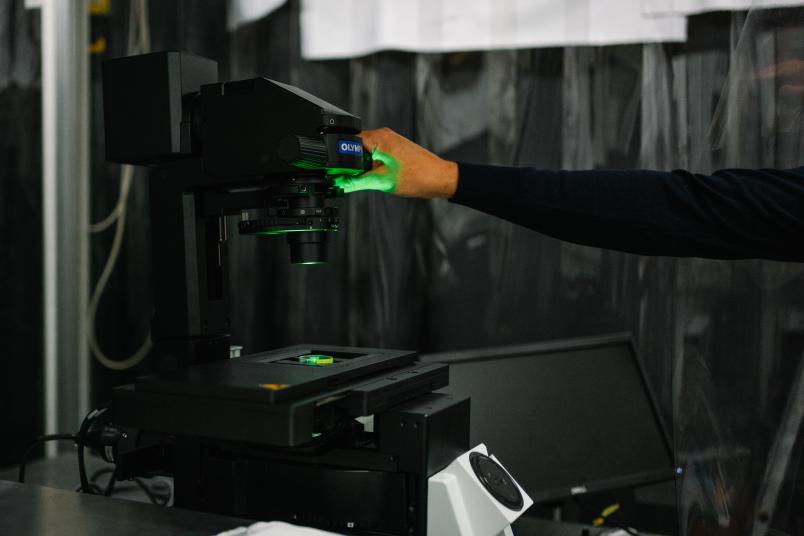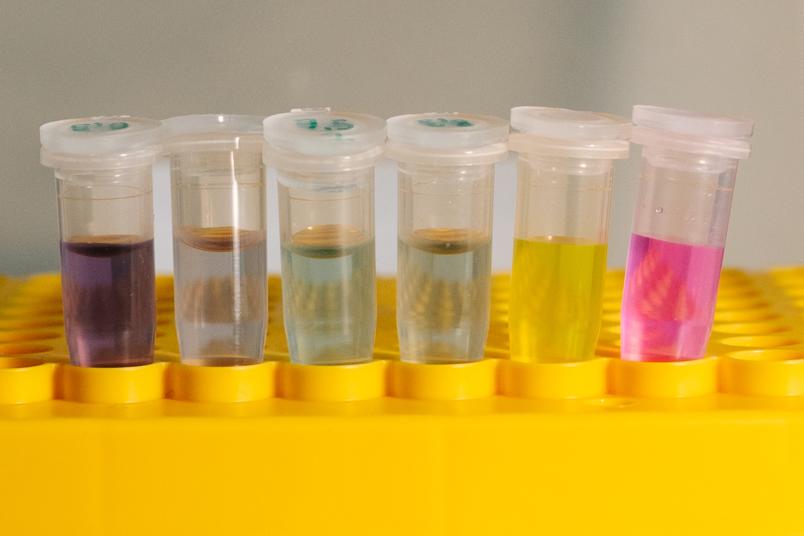
Carbon nanotubes are colorful, but they only show their true range of colors when an aqueous solution only contains tubes of a specific diameter.
Biochemistry
Carbon’s Colors of the Rainbow
Carbon in various colors is causing a stir at Sebastian Kruss’ lab. Researchers in Bochum are experimenting with the colorful little specimens for biomedical applications.
When you think of carbon, you probably imagine dark colors. This is only natural, because coal is black and the graphite in our pencils is gray. If you associate carbon with sparkling gems, you might imagine clear diamonds. Only very few would think of carbon and picture the colors of the rainbow. Yet they do exist, including in the laboratory of Professor Sebastian Kruss.
The physical chemist in Bochum is experimenting with carbon nanotubes. These tiny tubes consist of a honeycomb-shaped carbon mesh and are so small that they cannot be seen with the naked eye: They are 100,000 times thinner than a human hair. An aqueous solution of a mixture of carbon nanotubes appears black, as would be expected. But if these tubes are carefully separated by their different diameters, they reveal their full range of colors. One diameter creates a yellow liquid, another creates a green one, then blue, and so on.
Nanotubes as sensors
Nanotube solutions are not just pretty to look at, but also play a special role at the Research Group for Biophotonics and Functional Materials at Ruhr University Bochum: They are used as sensors. These tiny specimens of carbon are practical in that they fluoresce when visible light shines onto them. This means that they emit light of another wavelength than that of the light that hits them, specifically in the near-infrared spectrum, which humans cannot see.
Near infrared images and normal photos
Near infrared images and normal photos
“This spectrum of wavelengths is interesting for many applications, such as biomedical diagnostics,” says Kruss. Unlike visible light, near-infrared light scatters less. “This means that we can take sharper images,” he says. “With its longer waves, near-infrared light can penetrate tissue deeper than visible light, but is not harmful as UV light or X-Rays.”
Applications in biomedicine
There are many potential applications. “You can use carbon nanotubes to visualize structures in the body or confirm the presence of various substances,” Kruss explains. For example, his group has shown that this method can be used to detect the neurotransmitter dopamine, which plays an important role in Parkinson’s disease.
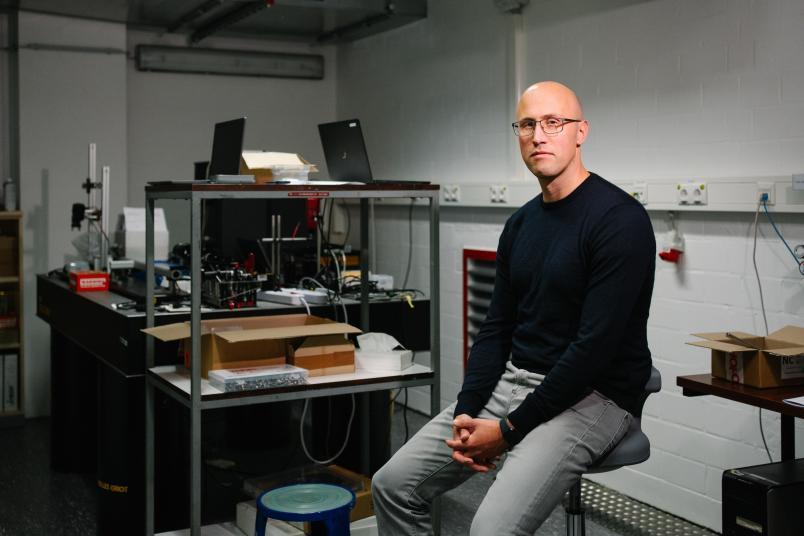
Sebastian Kruss leads the Research Group for Biophotonics and Functional Materials at Ruhr University Bochum.
In order to use the nanotubes as sensors for endogenous substances, the researchers first have to make them biocompatible. This involves camouflaging them by coating the surface in biopolymers or wrapping them in a DNA fragment so that the nanotubes look as though they belong to the body. There is another purpose to this modification, however: By coating the tubes, they allow them to bind substances, such as dopamine.
Bond changes glowing behavior
If a dopamine molecule makes contact with a correspondingly modified nanotube, the dopamine connects to the surface of the tube, which then glows brighter in the near-infrared spectrum. The biochemists can record this difference with specially designed microscopes.
Water molecules change how the tubes glow
Water molecules change how the tubes glow
Kruss’ group was able to measure the concentration of dopamine by using carbon nanotubes as a sensor. This was possible both in a standardized buffer solution as well as when released directly from cells under conditions similar to the human body. “The latter is much more complicated because, for example, blood contains all the possible components that can disrupt the measurement,” Kruss explains.
Precise measurements for personalized medicine
The method could conceivably be applied to personalized medicine, for example. Persons with Parkinson’s disease often receive L-Dopa, a precursor to dopamine. “The dosage of L-Dopa has to lie within a certain therapeutic window,” says Kruss. Too little or too much has a negative impact on the symptoms. “One specific dosage may be ideal for one patient but not for another. There are also differences depending on the patient’s sex.”
According to Kruss, this problem can be solved by simply measuring the concentration of L-Dopa with carbon nanotubes. “Such a test could be similar to a glucose test in that you extract a drop of blood and conduct the measurement outside of the body,” he says. The dosage of L-Dopa could vary as needed, just as persons with diabetes can adjust their dosage of insulin after a blood sugar test. The researchers have already been able to show that L-Dopa can be measured in human serum. Furthermore, the team in Bochum worked with the Fraunhofer Institute for Microelectronic Circuits and Systems in Duisburg to develop a small measuring device for the nanotube sensors that, theoretically, can be read with a smartphone camera. The scientists hope to further develop the technology into a product in the future.
But the nanotube sensor technology could also be used for other purposes than dopamine measurements. It could verify the presence of other substances, such as those that indicate certain bacteria or viruses. The team in Bochum can furthermore use the technology to visualize how nerve cells communicate with each other.
Communicating with plants through nanotubes
The team is exploring one use outside of biomedicine, specifically by testing the carbon nanotubes as plant sensors. “We envision smart plants,” says Kruss. “We can equip them with nanosensors and communicate with them to find out what they are lacking.”
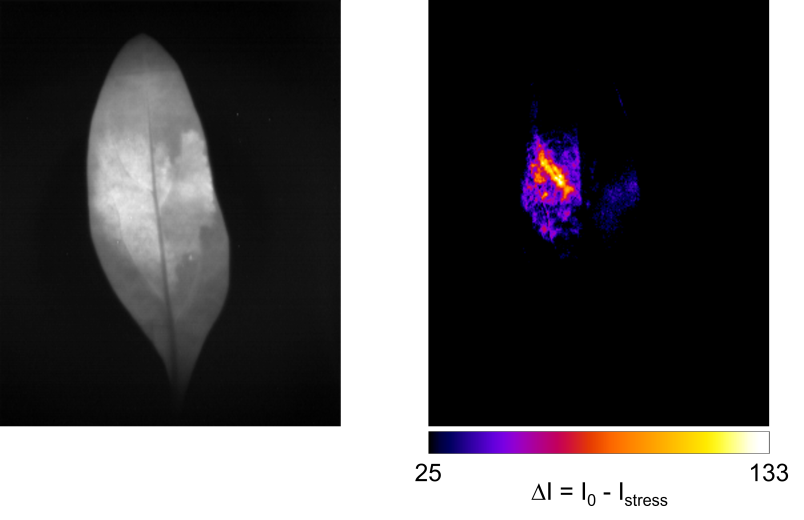
On the left, you can see an infrared image of a plant leave. The color-code on the right shows where in the leave the plant reacts to stress by releasing reactive types of oxygen. The brighter the color, the larger the stress.
Plants experiencing stress due to heat or drought emit reactive types of oxygen that change how the nanotubes glow. Plants defend themselves against pests by secreting certain substances that nanotubes can detect similar to the types of oxygen. “The idea is to be able to precisely determine what a plant is lacking in order to implement the necessary actions accurately and while saving resources,” explains Kruss. The prospects are anything but bleak.
